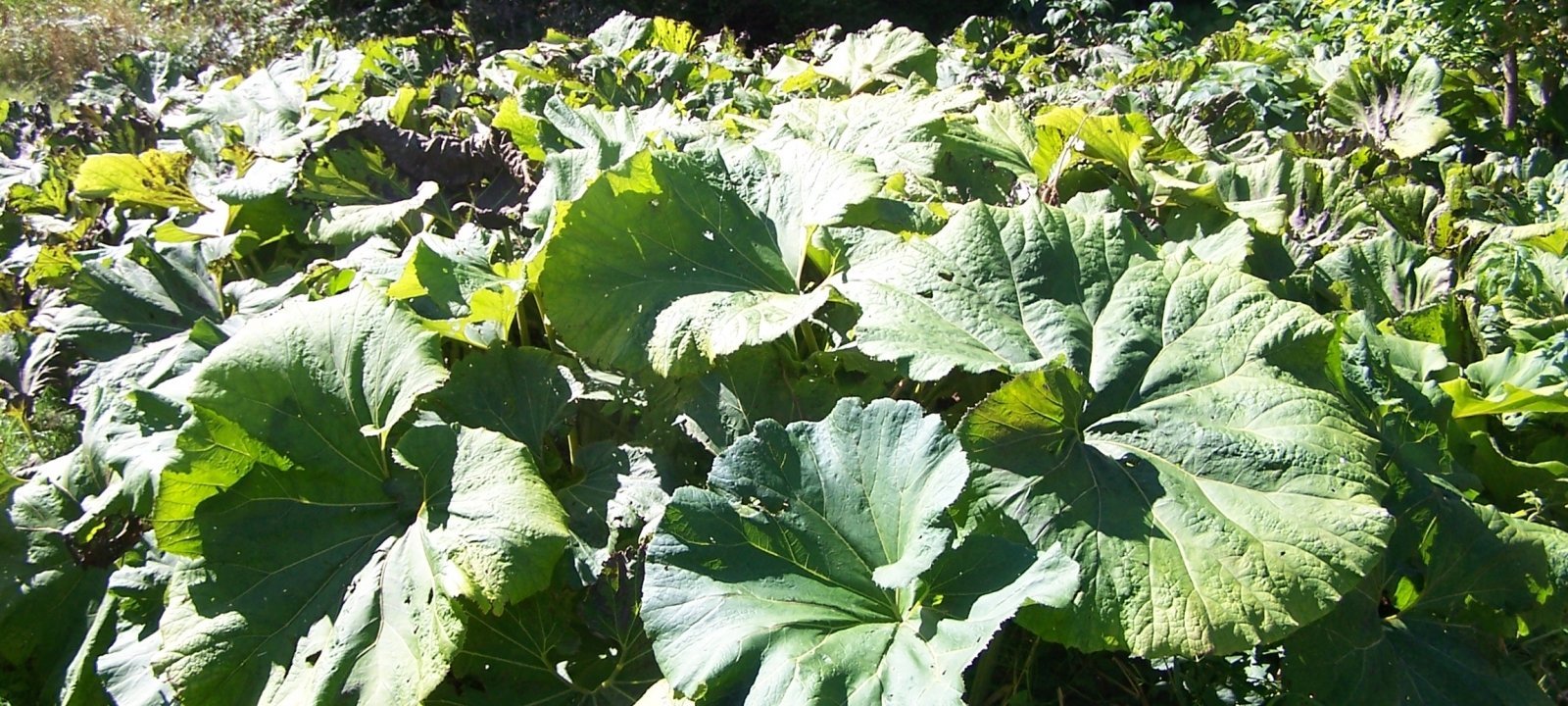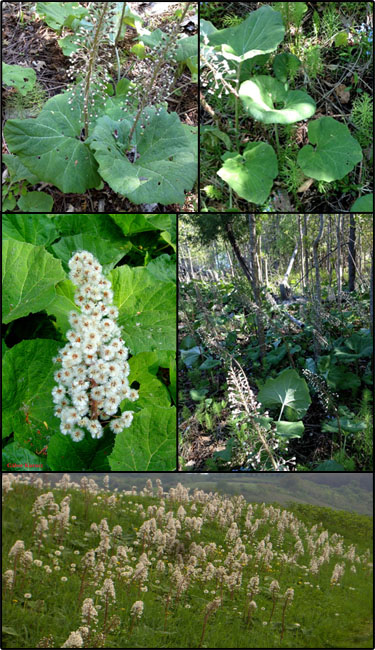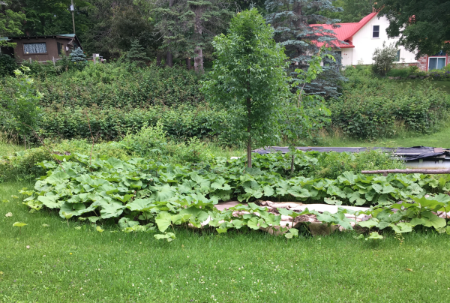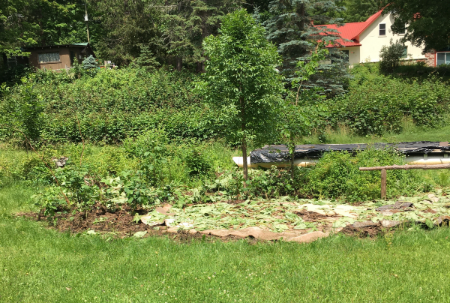Butterbur
Image credit: Sigrid Resh

Butterbur
Image credit: Sigrid Resh
Butterbur, a perennial in the Asteraceae family, is a herbaceous plant that invades shaded areas with moist soil, including river banks, shorelines, wetland edges, forested floodplains, and roadside ditches.

Butterbur's identifying features
Image Credit: Midwest Invasive Species Information Network (MISIN)
For more information, visit MISIN's website
Butterbur spreads easily by rhizomes as well as by seed production. KISMA has been managing a half-acre butterbur area in Chassell periodically since the summer of 2021, and the results are looking optimistic.
Note: The purpose of this removal strategy is to starve the rhizome system of any carbohydrates that would be gained by photosynthesis and will require multiple years of surveillance and removal of plant material to be successful.

Butterbur before the third total cutting, July 11, 2022
Image credit: Clara Stauber

Butterbur after the third total cutting, July 11, 2022
Image credit: Clara Stauber
Species such as red osier dogwood (Cornus sericea), joe-pye weed (Eutrochium purpureum), and swamp milkweed (Asclepias incarnata) are great native alternatives as they all thrive in environments similar to butterbur. It is important to replace butterbur with native alternatives to keep it from growing back after removal and to cover up exposed topsoil.